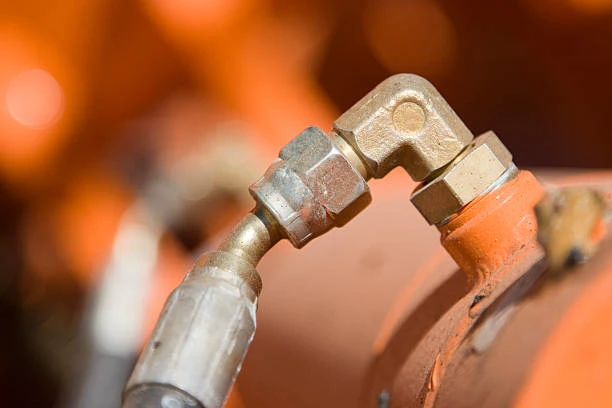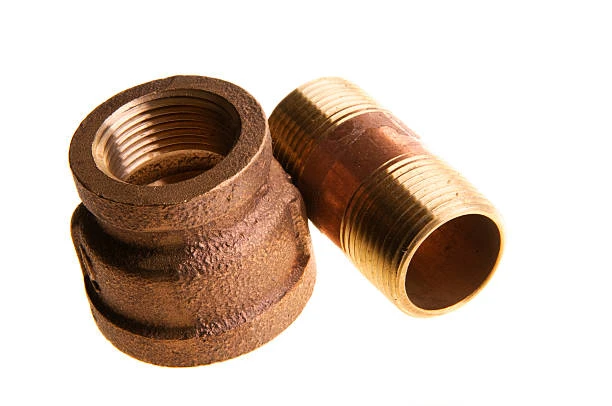Concerns about lead contamination in drinking water have surged recently in Australia, with reports indicating that brass fittings used in plumbing systems are a significant source of this issue. Brass fittings, widely used in residential and commercial plumbing, contain varying amounts of lead, which can leach into drinking water, posing serious health risks. This article will explore the implications of lead leaching from brass fittings, the health risks associated with lead exposure, and potential solutions to mitigate this growing concern.
Understanding Brass Fittings
Brass fittings are commonly used in plumbing due to their durability, corrosion resistance, and ease of installation. Composed primarily of copper and zinc, brass often contains small amounts of lead to improve machinability and reduce production costs. While these fittings have been a staple in plumbing for decades, the presence of lead raises serious concerns, especially regarding drinking water safety.
Common Applications of Brass Fittings
Brass fittings are employed in various applications, including:
- Water Supply Lines: Used to connect pipes in residential and commercial water supply systems.
- HVAC Systems: Integral to heating, ventilation, and air conditioning systems for fluid transfer.
- Gas Lines: Often used in natural gas and propane lines due to their reliability.
- Industrial Applications: Found in numerous industrial processes requiring durable connections.
Despite their advantages, the potential for lead leaching from brass fittings necessitates a closer examination of their safety, especially in drinking water systems.
The Issue of Lead Leaching
The leaching of lead from brass fittings into drinking water can occur under certain conditions, such as:
- Water Temperature: Hot water tends to facilitate greater lead leaching than cold water.
- pH Levels: Acidic water can corrode brass fittings more quickly, increasing lead levels in drinking water.
- Duration of Water Stagnation: Water that remains stagnant in pipes for extended periods can absorb more lead.
Recent Findings in Australia
Recent studies in Australia have detected elevated lead levels in drinking water supplies, with brass fittings identified as a major contributor. These findings have prompted health authorities to issue warnings and recommendations for testing and remediation in affected areas. The issue has raised alarms not only among health officials but also among residents who rely on municipal water systems.
Health Risks Associated with Lead Exposure
Lead exposure is linked to various health problems, particularly in vulnerable populations such as children and pregnant women. Some potential health risks include:
1. Neurological Damage
In children, even low levels of lead exposure can lead to developmental delays, reduced IQ, and behavioral issues. The nervous system is particularly susceptible to the toxic effects of lead.
2. Kidney Damage
Long-term exposure to lead can cause kidney damage in adults, leading to chronic kidney disease and other serious health complications.
3. Cardiovascular Issues
Lead exposure has been linked to hypertension and other cardiovascular problems, increasing the risk of heart disease and stroke.
4. Reproductive Health Effects

Regulatory Response and Guidelines
In response to the emerging crisis, Australian health authorities and regulatory bodies are taking steps to address lead contamination in drinking water. Key measures include:
1. Increased Testing
Authorities are urging municipalities to increase testing for lead levels in drinking water, particularly in areas with older plumbing systems that may contain brass fittings.
2. Public Awareness Campaigns
Public health campaigns aim to educate residents about the risks of lead exposure and the importance of testing their drinking water, especially for families with young children.
3. Recommendations for Remediation
Health officials are advising homeowners to replace brass fittings and use lead-free alternatives when necessary. Solutions may include installing new piping materials that do not leach harmful substances.
Alternatives to Brass Fittings
To mitigate the risks associated with lead leaching, several alternatives to brass fittings are available, including:
1. Lead-Free Brass
Some manufacturers now produce lead-free brass fittings that meet safety standards without compromising performance. These fittings use alternative materials to maintain the desired properties without lead.
2. Plastic Fittings
High-density polyethylene (HDPE) and polyvinyl chloride (PVC) fittings are popular alternatives. While not suitable for all applications, they do not leach harmful substances into drinking water.
3. Stainless Steel Fittings
Stainless steel is another viable option for plumbing systems. While generally more expensive, stainless steel fittings offer excellent corrosion resistance and do not contain lead.
Conclusion
The issue of lead leaching from brass fittings in Australia’s drinking water supply poses a significant health risk, particularly for vulnerable populations. As concerns about lead exposure grow, it is crucial for regulatory bodies and homeowners to take proactive measures to address the problem. Increased testing, public awareness, and the adoption of safer alternatives can help ensure the safety of drinking water for all Australians. The transition to lead-free plumbing systems is a vital step toward protecting public health and maintaining the integrity of vital water resources.
FAQs
1. What are brass fitting?
Brass fitting are plumbing components made primarily of copper and zinc, often containing small amounts of lead to enhance machinability. They are commonly used in water supply lines, HVAC systems, and gas lines.
2. How does lead leach from brass fitting into drinking water?
Lead can leach from brass fitting into drinking water due to factors such as high water temperature, acidic pH levels, and prolonged stagnation of water in pipes.
3. What are the health risks associated with lead exposure?
Lead exposure can cause neurological damage, kidney damage, cardiovascular issues, and reproductive health effects, especially in children and pregnant women.
4. What steps are being taken to address lead contamination in drinking water?
Health authorities are increasing testing for lead levels, launching public awareness campaigns, and recommending the replacement of brass fittings with lead-free alternatives.
5. What alternatives exist for brass fitting?
Alternatives include lead-free brass, plastic fitting like PVC and HDPE, and stainless steel fitting, all of which do not leach harmful substances into drinking water.


















